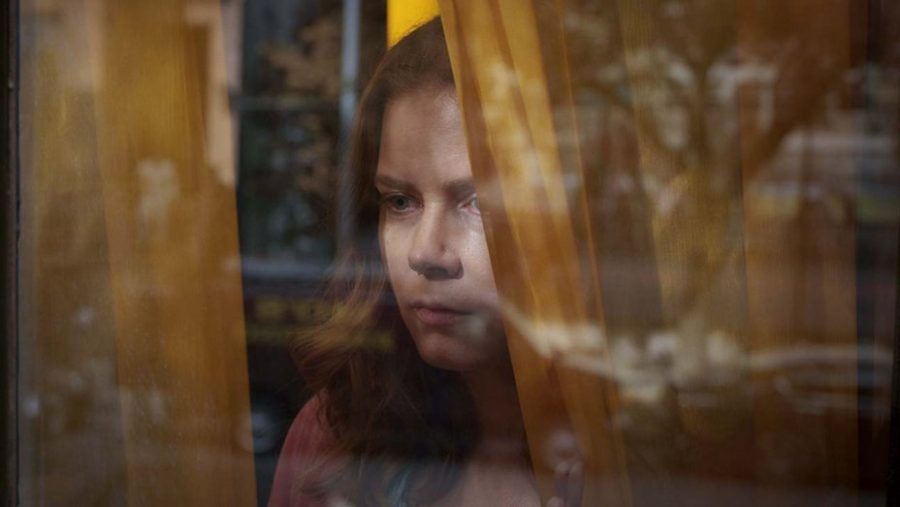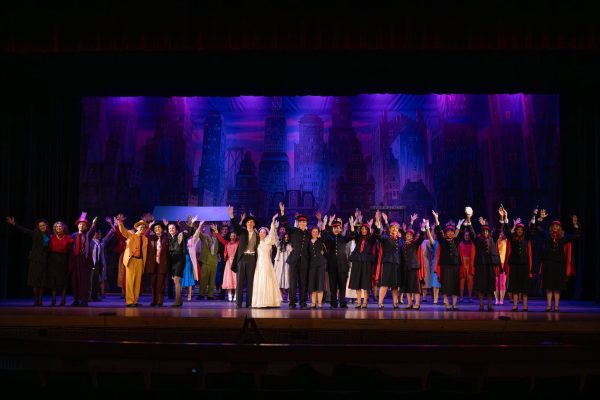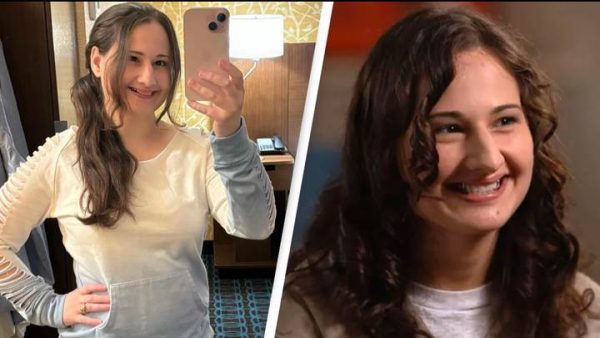“The Woman in the Window” finds Amy Adams’ talent wasted
Amy Adams stars as Anna in Joe Wright’s “The Woman in the Window.”
Overall rating: 37/100
Alfred Hitchcock. You most likely recognize the name, and if you don’t, you’ve still likely unknowingly watched or read something that has been impacted by his work—if “Rope” hadn’t been made in 1948, one-shot films (or any film that aims to create the illusion of being captured in one take) wouldn’t have been made, and if “Psycho” hadn’t caused a shockwave with its then-extreme violence in 1960, we probably wouldn’t have majority of modern R-rated films.
The influence he’s had on not just the film industry but entertainment as a whole across all mediums is something to admire, but as is the way with anything successful, people will try to replicate your work. That’s not to say that A.J. Finn, the author behind the 2018 novel “The Woman in the Window,” intended to make something so similar to Hitchcock’s 1954 masterpiece “Rear Window”; it is entirely possible that he came up with the story on his own. But, just as it is inevitable that people will rip off other people’s work, it is inevitable that people will make comparisons between two narratives about people that are stuck inside their home witnessing murders.
Before I go any further, I think it’d be wise to mention the long road that “The Woman in the Window” took to its release. The project was announced in 2016, and in 2018 it was announced that Joe Wright, the director behind the 2005 “Pride and Prejudice,” was going to direct and that Tracy Letts, the Tony award-winning playwright and actor behind the play “August: Osage County,” was going to be the screenwriter. The cast of Amy Adams, Julianne Moore, Wyatt Russell, Gary Oldman, Jennifer Jason Leigh and Anthony Mackie wasn’t announced too much later, and filming wrapped in October of that year. From there, the editing process of the film was halted by reshoots, the Disney-Fox Merger (fun fact: this was the last film to be released under the Fox 2000 label; what a note to go out on) and the unsatisfactory response it was met with at test screenings, causing its release date to be delayed from Oct. 4, 2019 to to May 15, 2020. When the COVID-19 pandemic hit, the film was removed from the release schedule entirely, and it wasn’t until Netflix picked up the film that it finally got released on May 14, 2021, almost five years after it had first been announced.
Films that go through “development/production hell,” as it has been termed, always raise wary eyebrows in the film industry. Obviously there are films that exceed these labels—“Mad Max: Fury Road,” “The Adventures of Tintin” and Martin Scorsese’s “The Irishman” to name a few—and films that don’t—the 2017 live-action “Death Note,” “Sin City: A Dame to Kill For” and “Tom and Jerry”—and fans of the novel, Amy Adams fans and moviegoers in general had been anxiously waiting for “The Woman in the Window” to finally get a release so we could see whether or not it would live up to its expectations. Long story short: it didn’t.
Director Wright’s adaptation of Finn’s “The Woman in the Window” is, as I’ve already mentioned, very similar in story to that of “Rear Window.” We follow Anna, played by Amy Adams, an agoraphobic child psychologist who lives in an apartment in Manhattan with her tenant David living in the basement. Anna spends her days washing down her copious amounts of medication with alcohol, watching old movies and spying on her neighbors. She becomes friends with Jane, the mother of the Russell family who has just moved in across the street. After a while, however, she starts to learn that the father, Alistair, is abusive towards Jane and the teenage son Ethan. As tensions begin to rise, she witnesses Jane’s murder through the lens of her camera, only to find an unrecognizable woman who calls herself Jane Russell alive and well the next day, and soon everyone and everything around her is questioned.
At its best, I found “The Woman in the Window” to be unintentionally hilarious (for example, the moment where Anna grabs an umbrella and we hear the sound of a sword unsheathing), but those moments were brief. The majority of this film is trite and platitudinous in both its visuals and its narrative. Since Anna is agoraphobic, the film is restricted to mainly one location, that being her apartment. Films that take place in one location are always enticing for me because it allows the filmmaker to hone in on two major aspects. The first is the production design, as if your film is going to take place in one location, you might as well make that location as detailed as possible. Secondly, you have the cinematography, as there are an infinite amount of opportunities to manipulate the location and continuously feature interesting and unique shots—“12 Angry Men” has to be the ultimate example of that. Unfortunately, “The Woman in the Window” is photographed and edited in a predictable manner, which isn’t something that’s bad, per se—on the contrary, there are plenty of shots in the film that I thought were really appealing. There are moments where it does take a singular approach to its visuals, but when they do happen it’s hardly admirable and more so ludicrous. It makes me wonder what exactly the crew was thinking while making the film.
Quite frankly, that sentiment could be applied to the majority of the film’s aspects. I knew going into this that there had been reshoots, but it really feels like they might’ve reshot everything based on the quality of the directing. The delivery of certain lines from actors feels like it was either the very first take of that scene or there had been so many to the point that the actors and Joe Wright had lost their mind and forgotten what they were doing, like the baseball bat scene in “The Shining.” It’s understandable that there’d be issues condensing a 448 page novel into 100 minutes, but there’s also inherently an issue with making the runtime that unnecessarily short—although I doubt twenty or thirty minutes would make that much of a difference. Even if it did, there have been much longer novels squeezed into runtimes that aren’t much longer than this one’s to much greater success (“Harry Potter and the Order of the Phoenix” is over 800 pages long and its adaptation manages a 138 minute runtime perfectly fine).
I’ll avoid spoilers if you want to see the film for yourself, but throughout the first half of this film, so much is set up in terms of leads, and as with many mysteries there are red herrings. The issue here is that there are smoke screens in this film that get resolved so quickly and shabbily in time for the climax since the story was busy focusing on other things, particularly a plot twist in the second half. Now, I’m all for making a story be oriented around grief and trauma and am in no way trying to discount these themes, but must every single new release that’s dark and brooding feature these thematic elements? Not only that, but “The Woman in the Window”’s usage of these themes and how it chooses to reveal them wasn’t laughable or boring but instead just tonally confusing, as the scene comes out of nowhere. People will say that that’s the point of the reveal, and obviously I understand why it’s there perfectly fine; at the moment, maybe I even mildly enjoyed it. But it’s the effect that it has on the rest of the film and its pacing, as well as just being insanely jarring, that reduces any potential it had to be a memorable plot twist—at least in a good way.
There are things that are in “The Woman in the Window” that I was able to vaguely enjoy. Amy Adams always brings her best for any given role, and here is no exception, even if it’s nowhere close to being her actual best. The ensemble cast supporting her is also pretty good, although I definitely wish Julianne Moore was given more screen time so Jane and Anna’s relationship was more fleshed out (I also just really like Julianne Moore). And regardless of whether or not I enjoyed it, there’s something admirable about how strange this is. Maybe that’s the laughably bad portions of this film speaking for me, but it’s still something. That doesn’t change what this is at its core, however: a film that’s just plain uninteresting no matter how much it hints at interesting things. Most likely a movie that I’ll forget about in a few weeks and won’t be reminded of until I look back at my ranking at the end of the year.
Your donation will support the student journalists of Neuqua Valley High School. Your contribution will allow us to print our next newspaper edition as well as help us purchase equipment and cover our annual website hosting costs.







